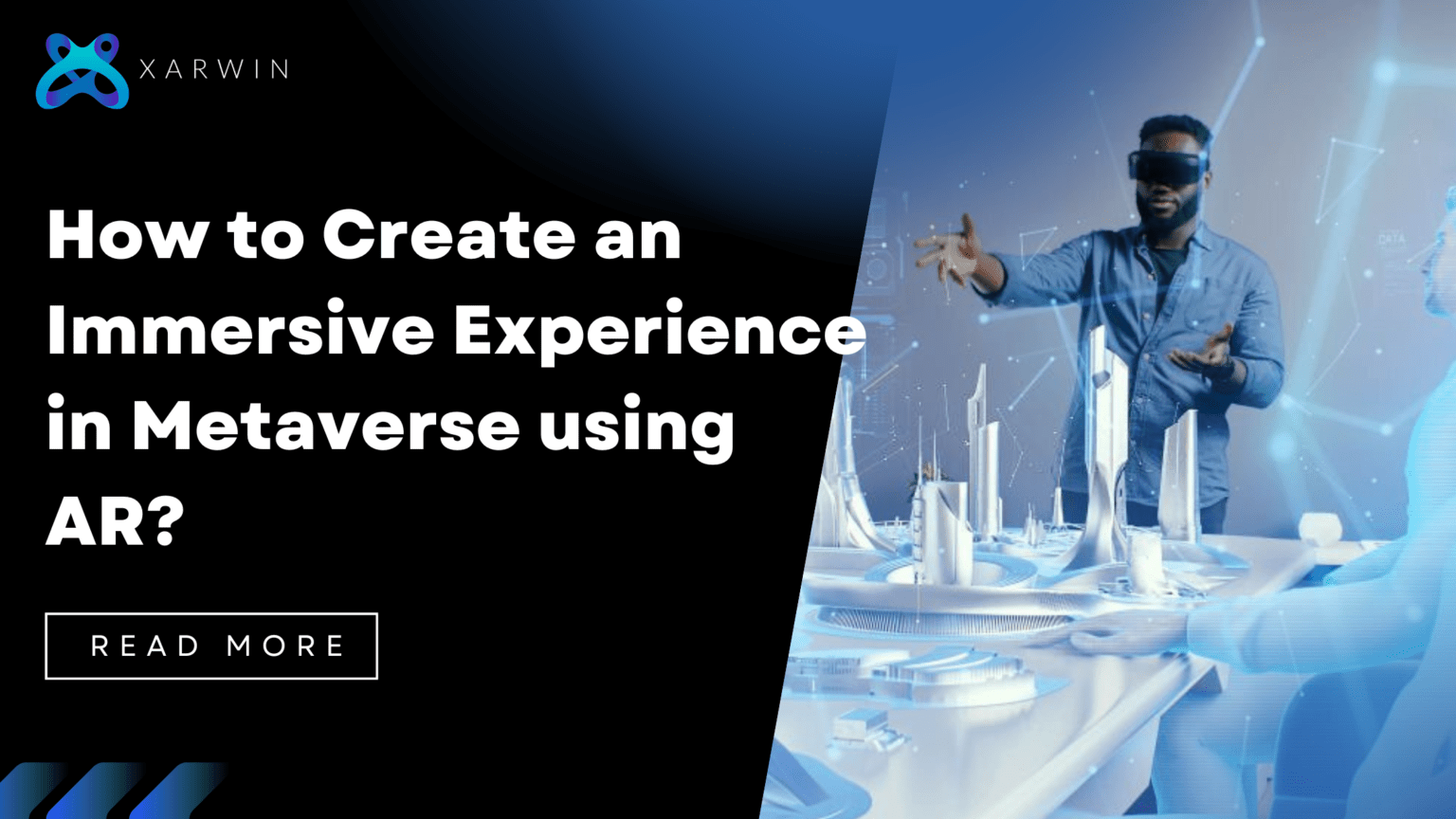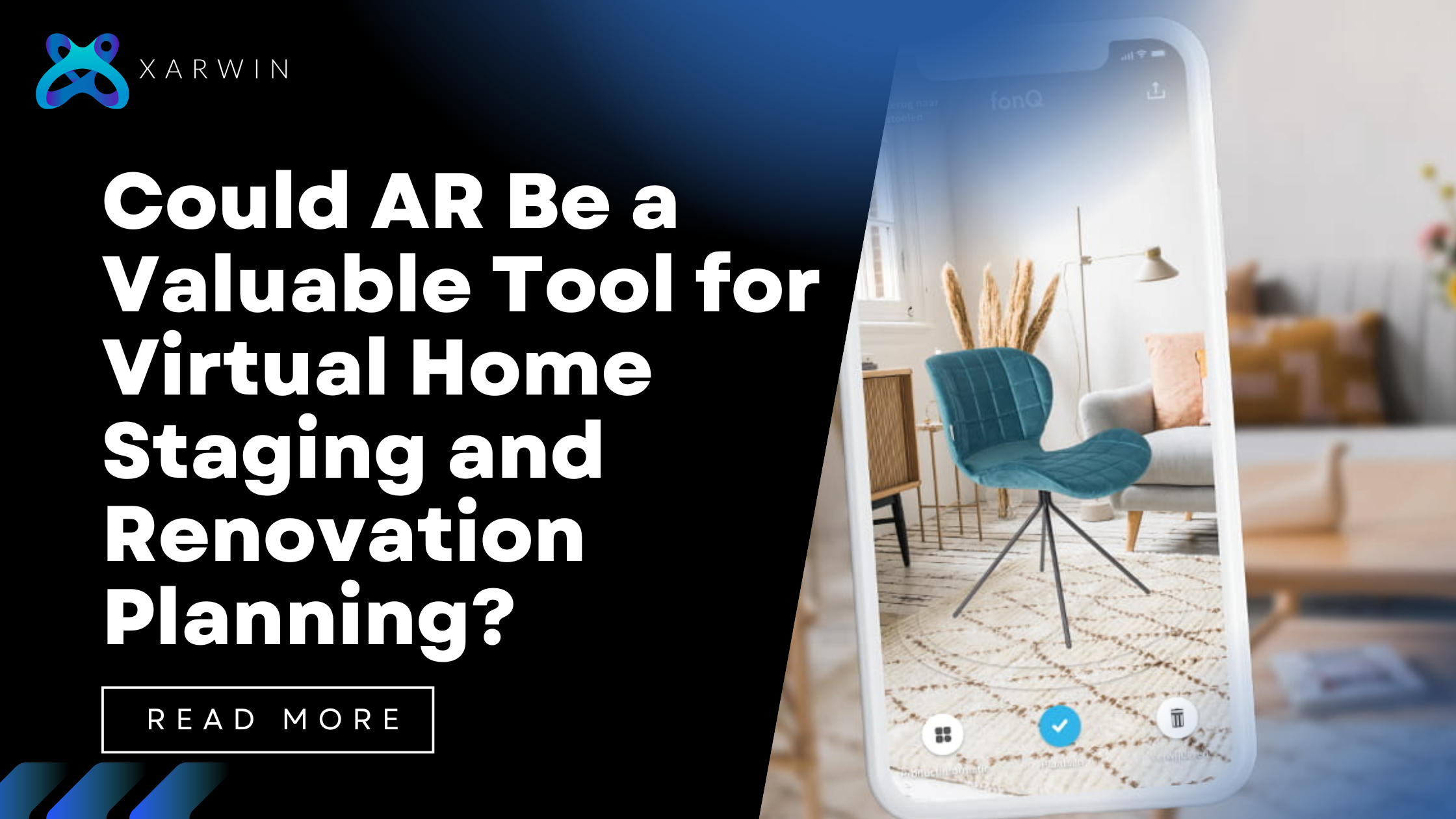The Metaverse is an exciting and revolutionary platform that merges augmented reality, social media, and gaming. By using avatars, users can engage with content and each other in a 3D environment that fully immerses them in the experience. One of the most thrilling aspects of the Metaverse is its potential to offer new and immersive forms of engagement.
In this blog post, we will delve into how augmented reality technology can be harnessed to create interactive experiences within the Metaverse environment.
What is Metaverse?
Have you heard of the Metaverse? It’s an exciting new concept for the internet that involves a network of interconnected virtual worlds and augmented reality experiences that can be accessed through devices like VR headsets and AR glasses. The potential for more immersive and interactive digital experiences is truly amazing.
AR for Immersive Experience in the Metaverse
1. Interactive Overlays and HUDs
One way AR can enhance Metaverse experiences is through interactive overlays and heads-up displays (HUDs). For example, when exploring a virtual world, AR could overlay helpful information like maps, directions, notifications, and chat directly onto the user’s view Interactive buttons and menus anchored to real or virtual objects This creates a more informative and engaging interface.
2. Location-Based Experiences
AR experiences in the Metaverse don’t need to be static – they can be around specific real-world locations. For example, around a city triggers virtual scavengers, walking tours with historical overlays, and interactive art installations anchored to physical spaces. Users could on experiences tied to public art.
3. Collaborative Virtual Objects
With AR, virtual objects just need to overlay the real world and can be interacted with and manipulated as if they were real. For example, users could collaboratively design virtual sculptures, structures, or devices by manipulating and assembling that appear anchored in space. Changes would sync across devices in real time.
4. Immersive Games and Simulations
Many types utilize AR in the Metaverse for truly immersive interactive gameplay. For example, augmented reality Pokémon-style games could place virtual creatures in the real world. Simulation and engineering applications may allow interaction with virtual systems and prototypes overlaid on the world. Sports simulations may overlay virtual, courts and players onto open spaces for interactive practice and training.
5. Remote Assistance and Education
AR offers possibilities for, education and collaboration. For example, a could see what a user sees and draw annotations directly onto their view of a machine. Students could experience virtual field trips, with information overlaying them, or collaborate on models and experiments overlaid in their real spaces. Remote experts could guide users through complex repairs or procedures.
6. Social Interactions and Events
One of the most exciting aspects of the Metaverse is how it will enable new forms of social interaction. AR enhances social potential by allowing shared experiences anchored in space. For example, users could collaboratively experience concerts, movies, or events together while physically apart, with virtual content synced for all participants based on location.
Monetization Opportunities in AR Metaverseiences AR in the Metaverse should aim to provide value first, there are also opportunities for monization. For example, access to certain location-based experiences, simulations, games, or virtual events could require paid access or subscriptions.
Virtual goods, avatars, costumes, and other customizations could also be sold. Sponsorships or advertisements may be incorporated into experiences in non-abusive ways. Overall, AR enhances the Metaverse’s potential for, interactive and socially-connected experiences.
How to integrate AR into the Metaverse
There are several AR technologies and frameworks that can be utilized to bring augmented experiences to the metaverse. Some of the major ones include:
- Marker-based and markerless tracking technologies allow virtual objects to be anchored in physical space and interact with surfaces, using visual markers and computer vision respectively.
- Objects and environments can be digitized and reconstructed in virtual worlds using 3D scanning and modeling, with photogrammetry and LiDAR scanning being common techniques.
- Spatial technologies create 3D maps of physical spaces, allowing virtual content to be overlaid and interact with reality.
Object recognition vision algorithms can identify and track real-world objects, enabling interactions between physical and virtual items. - AR development platforms, such as ARKit, Core, and Xarwin, offer tools and APIs for building AR apps for various devices. Additionally, WebXR enables AR on web browsers.
- HoloLens and Quest HMDs offer immersive AR/VR experiences with digital overlays of real-world views.
Leveraging these AR technologies, virtual objects, avatars, and information can seamlessly blend into the metaverse. Users will be able to interact with both digital and physical elements.
Conclusion
In conclusion, reality has tremendous potential to enhance experiences within the Metaverse. By seamlessly overlaying digital information and objects directly into the user’s real environment, AR allows for location-based experiences, collaborative virtual objects, immersive simulations, remote assistance capabilities, and new forms of social interactions anchored in space.
As Metaverse platforms continue to develop, AR will play a key role in engaging, informative, and visually compelling experiences. With careful application of AR technologies and creative experience design the Metaverse can enable new frontiers of collaborative, interactive experiences that blend virtual and physical worlds.
As a trailblazer in augmented reality (AR), Xarwin combines innovation with a user-centric approach to redefine industry standards. Its team of expert engineers, designers, and strategists excels in crafting immersive AR experiences across various sectors. With each project, the company not only meets current demands but also shapes future trends, establishing itself as a leading force in the AR landscape.





